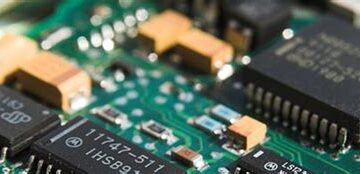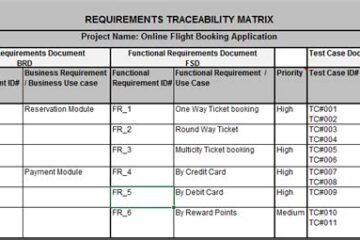Introduction to PCB Trace Repair
Printed Circuit Boards (PCBs) are essential components in modern electronics, connecting various components and enabling the flow of electrical signals. However, PCBs can sometimes suffer from damaged or broken traces, which can lead to malfunctions or complete failure of the device. In such cases, PCB trace repair becomes necessary to restore the functionality of the circuit board.
PCB trace repair is the process of fixing damaged or broken traces on a PCB using specialized tools and techniques. This article will guide you through the steps involved in performing PCB trace repair using a repair kit, along with tips and best practices to ensure a successful repair.
Understanding PCB Traces
Before diving into the repair process, it’s important to understand what PCB traces are and their role in the functioning of a circuit board.
What are PCB Traces?
PCB traces are the conductive pathways that connect various components on a printed circuit board. These traces are typically made of copper and are etched onto the PCB substrate. They allow electrical signals to flow between components, enabling the device to function as intended.
Common Causes of PCB Trace Damage
PCB traces can be damaged due to several reasons, including:
- Physical impact or stress
- Excessive heat exposure
- Manufacturing defects
- Corrosion or oxidation
- Improper handling or storage
When a trace is damaged or broken, it can disrupt the electrical connection, leading to malfunctions or complete failure of the device.
PCB Trace Repair Kit Components
A PCB trace repair kit typically contains the following components:
- Conductive epoxy or paint
- Fine-tipped applicator or brush
- Soldering iron and solder
- Flux pen or flux paste
- Magnifying glass or microscope
- Tweezers and precision tools
- Isopropyl alcohol for cleaning
- Multimeter for testing continuity
Having these components readily available will make the repair process more efficient and effective.

Steps for PCB Trace Repair
Follow these steps to perform PCB trace repair using a repair kit:
Step 1: Identify the Damaged Trace
Use a magnifying glass or microscope to carefully inspect the PCB and locate the damaged or broken trace. Look for any visible cracks, gaps, or discoloration along the trace path.
Step 2: Clean the Area
Before starting the repair, clean the area around the damaged trace using isopropyl alcohol and a soft brush or cotton swab. This will remove any dirt, debris, or oxidation that may interfere with the repair process.
Step 3: Apply Flux
Apply a small amount of flux to the damaged area using a flux pen or flux paste. Flux helps to improve the flow and adhesion of the conductive material during the repair process.
Step 4: Apply Conductive Epoxy or Paint
Using a fine-tipped applicator or brush, carefully apply the conductive epoxy or paint along the damaged trace. Ensure that the material bridges the gap and creates a continuous connection. Follow the manufacturer’s instructions for curing time and temperature.
Step 5: Solder the Connection (Optional)
If the repair requires additional reinforcement, you can solder a thin wire or conductive pad over the repaired trace. Apply a small amount of solder using a soldering iron, ensuring a secure connection.
Step 6: Clean and Inspect
After the repair is complete, clean the area again with isopropyl alcohol to remove any excess flux or debris. Inspect the repaired trace under magnification to ensure a proper and continuous connection.
Step 7: Test the Repair
Use a multimeter to test the continuity of the repaired trace. Set the multimeter to the continuity or resistance mode and place the probes on either end of the trace. If the multimeter beeps or shows a low resistance value, the repair is successful.
Best Practices for PCB Trace Repair
To ensure a successful and long-lasting PCB trace repair, consider the following best practices:
- Work in a clean and well-lit environment to minimize the risk of contamination and improve visibility.
- Use high-quality tools and materials specifically designed for PCB Repair to achieve the best results.
- Practice proper safety precautions, such as wearing protective gloves and ensuring adequate ventilation when working with chemicals or solder.
- Take your time and be patient during the repair process to avoid causing further damage to the PCB.
- Document the repair process, including the location of the repaired trace and any additional notes, for future reference.
Advanced PCB Trace Repair Techniques
In some cases, simple trace repair may not be sufficient, and more advanced techniques may be required. Some of these techniques include:
Jumper Wires
Jumper wires involve soldering a thin wire between two points on the PCB to bypass a damaged trace. This technique is useful when the damaged trace is too long or complex to repair directly.
Conductive Pads
Conductive pads are small, adhesive-backed metal pads that can be used to bridge gaps or reinforce repaired traces. They provide additional mechanical strength and electrical conductivity.
Trace Routing
Trace routing involves creating a new trace path on the PCB to replace a damaged or inaccessible trace. This technique requires careful planning and execution to ensure proper signal integrity and avoid interference with other components.
Troubleshooting Common PCB Trace Repair Issues
Despite following the steps and best practices, you may encounter some common issues during PCB trace repair. Here are a few troubleshooting tips:
- If the conductive epoxy or paint does not adhere properly, ensure that the surface is clean and free of contaminants. Apply additional flux if necessary.
- If the repaired trace still shows high resistance or no continuity, check for any gaps or discontinuities in the repair. Reapply the conductive material or consider using a jumper wire.
- If the PCB experiences other malfunctions after the repair, carefully inspect the board for any unintended short circuits or damage caused during the repair process.
Conclusion
PCB trace repair is a valuable skill for anyone working with electronics, as it can save time and money by fixing damaged circuit boards instead of replacing them entirely. By following the steps outlined in this article and utilizing a PCB trace repair kit, you can successfully repair damaged traces and restore the functionality of your devices.
Remember to practice proper safety precautions, work in a clean environment, and use high-quality tools and materials for the best results. With patience and practice, you can become proficient in PCB trace repair and tackle more complex repair challenges.
Frequently Asked Questions (FAQ)
1. Can I use regular epoxy instead of conductive epoxy for PCB trace repair?
No, regular epoxy is not conductive and will not establish an electrical connection. It is essential to use conductive epoxy or paint specifically designed for PCB repair.
2. How long does it take for the conductive epoxy or paint to cure?
The curing time for conductive epoxy or paint varies depending on the specific product and the ambient temperature. Refer to the manufacturer’s instructions for the recommended curing time and temperature.
3. Can I repair a PCB trace without using a repair kit?
While it is possible to repair a PCB trace without a dedicated repair kit, using the appropriate tools and materials designed for PCB repair will yield better results and increase the chances of a successful repair.
4. Is it necessary to test the continuity of the repaired trace?
Yes, testing the continuity of the repaired trace is crucial to ensure that the repair is successful and the electrical connection is properly established. Use a multimeter set to the continuity or resistance mode to verify the repair.
5. Can I repair a PCB trace that is completely broken or missing?
If a PCB trace is completely broken or missing, you may need to use more advanced repair techniques, such as jumper wires or trace routing, to restore the electrical connection. These techniques require careful planning and execution to ensure proper functionality.
| Component | Purpose |
|---|---|
| Conductive epoxy or paint | Establishes electrical connection across damaged traces |
| Fine-tipped applicator or brush | Applies conductive material precisely |
| Soldering iron and solder | Reinforces repaired traces and connects jumper wires |
| Flux pen or flux paste | Improves flow and adhesion of conductive material |
| Magnifying glass or microscope | Enhances visibility for precise repair work |
| Tweezers and precision tools | Assists in handling small components and materials |
| Isopropyl alcohol | Cleans the repair area before and after the repair process |
| Multimeter | Tests continuity and verifies successful repair |



0 Comments